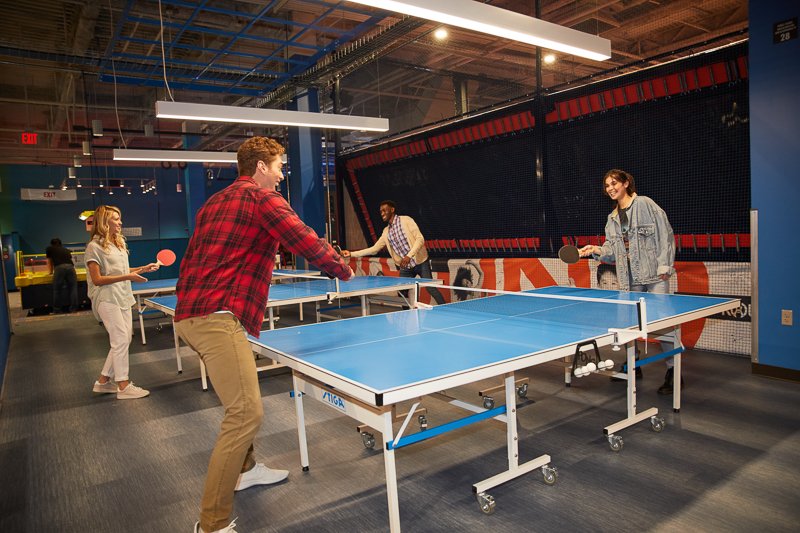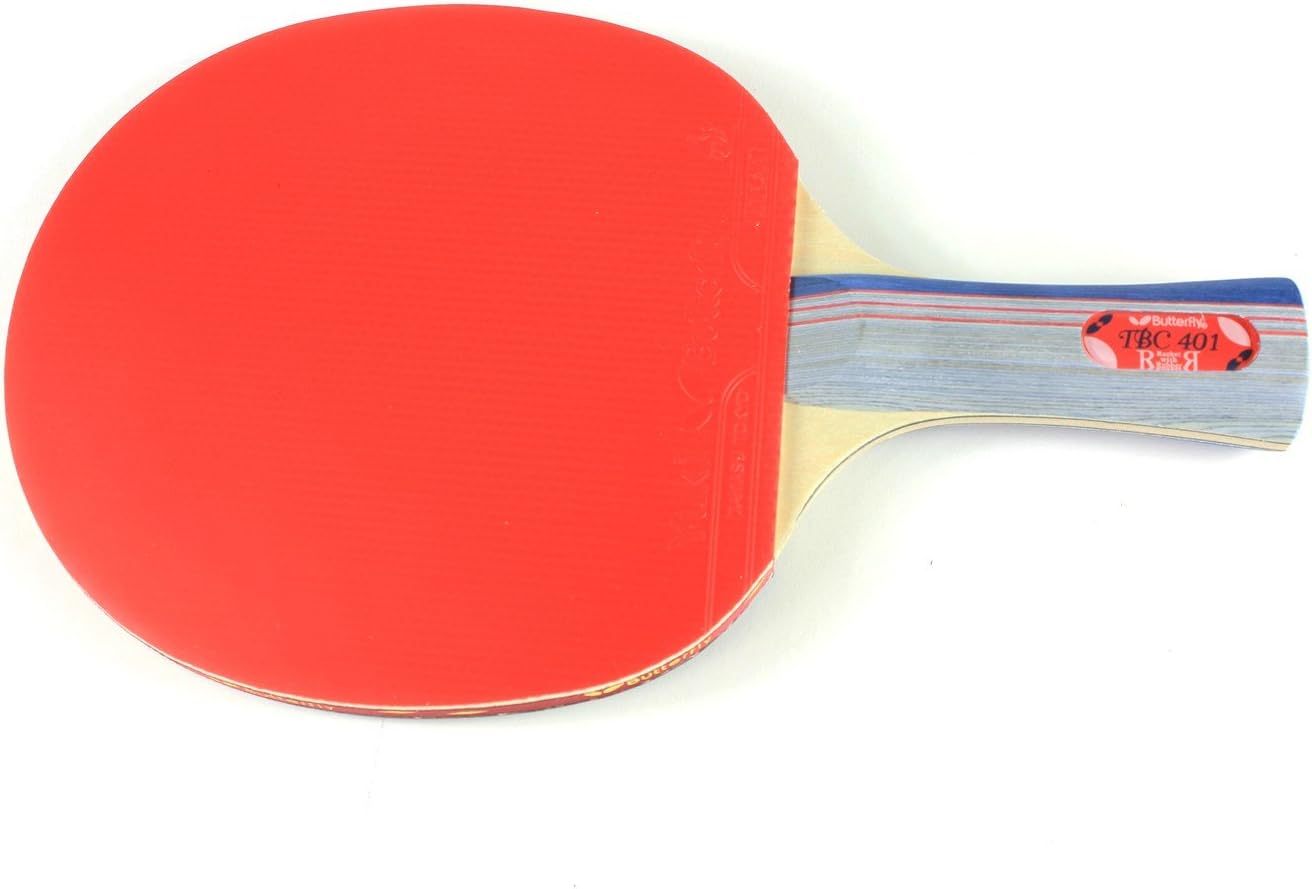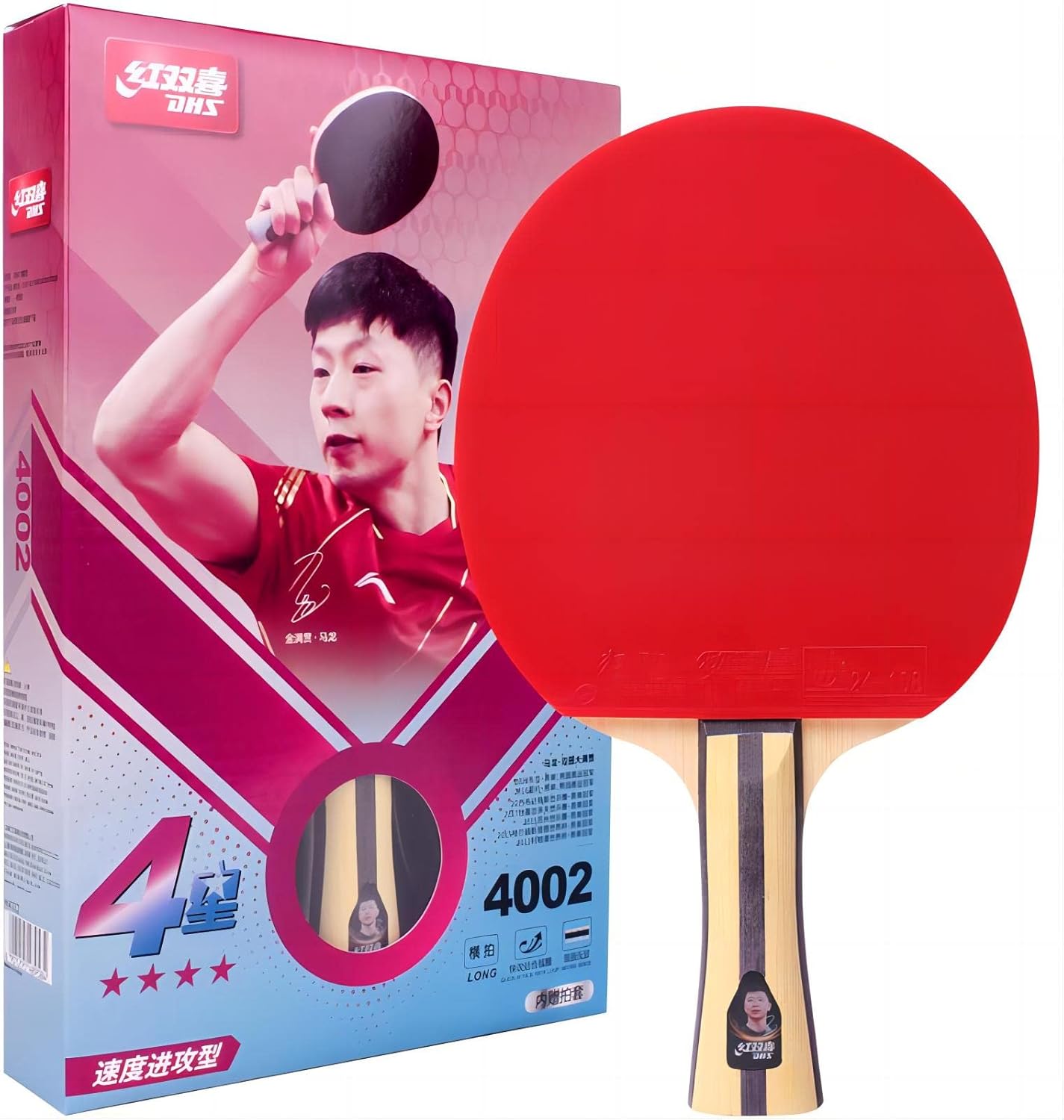Ping pong, also known as table tennis, is a popular sport that involves hitting a small, lightweight ball back and forth across a table using a racket. It is played by two or four players, who stand on opposite sides of the table and take turns hitting the ball. The objective of the game is to score points by making the opponent unable to return the ball legally.

Ping pong requires quick reflexes, precise hand-eye coordination, and strategic thinking. Players must be able to hit the ball with accuracy and power while also anticipating their opponent’s moves and adjusting their own gameplay accordingly.
The game is played on a rectangular table that is 2.74 meters (9 feet) long and 1.525 meters (5 feet) wide, with a net that divides the table into two halves. The ball is made of plastic and is 40 millimeters (1.57 inches) in diameter. The racket is typically made of wood or other lightweight materials, with a rubber or sponge covering on one or both sides to provide better control and spin.

Ping pong is a widely enjoyed sport that can be played for fun or in competitive settings. It is a great way to improve physical fitness, hand-eye coordination, and mental agility, and can be played by people of all ages and skill levels.
Ping Pong Paddle Composition
The blade is the central and most essential part of the racket, serving as its foundation.It is usually made of wood or a composite material such as carbon fiber, which provides strength, durability, and flexibility.The thickness, shape, and size of the blade can affect the speed, power, and control of the racket. For example, a thicker blade may provide more control but less speed, while a thinner blade may offer more speed but require more precision.
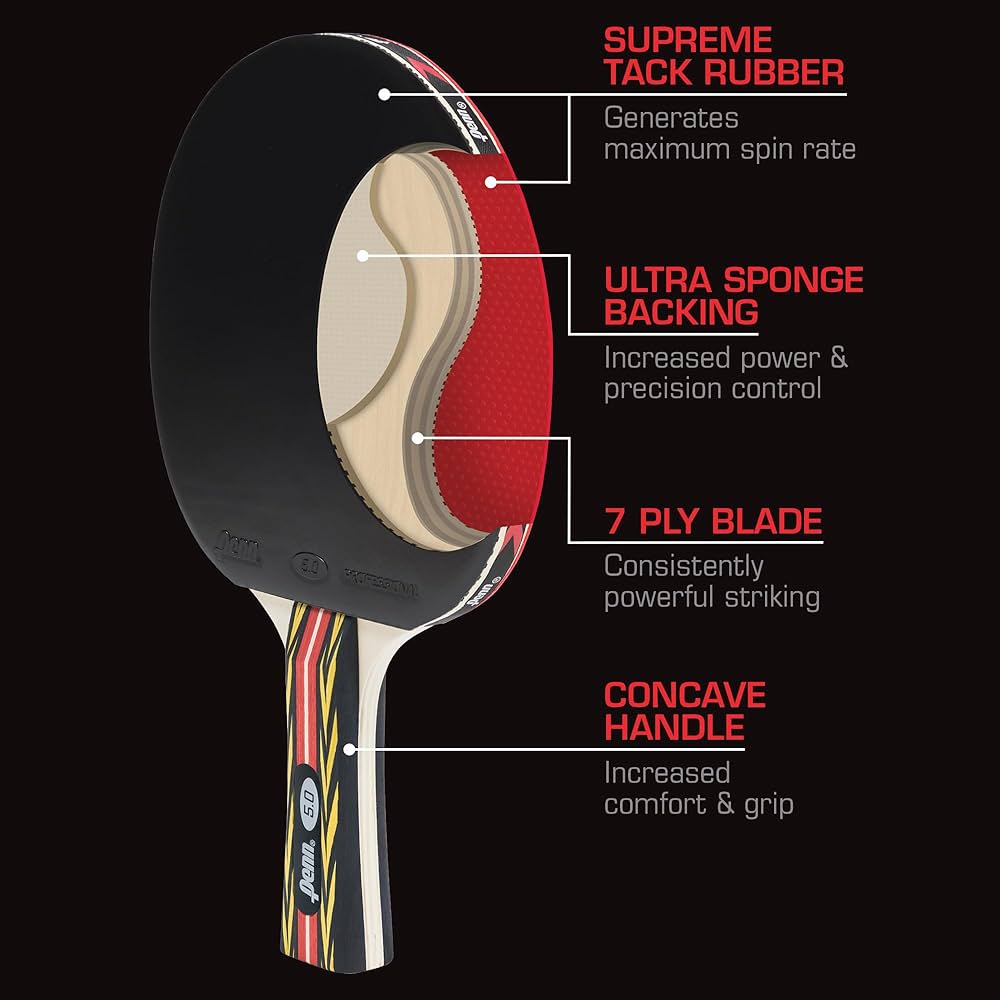
The rubber covering, also known as the sponge and rubber sheet, is attached to one or both sides of the blade.It is responsible for generating spin and control during play. The rubber can be of different types, such as tacky (sticky) or pimpled, and has varying degrees of hardness and thickness.The combination of rubber hardness, sponge thickness, and rubber type determines the level of spin and control the player has over the ball.
The handle is the part of the racket that the player grips during play.It comes in various shapes and sizes, and its design can impact the player’s comfort and grip.Ergonomic handles are designed to fit comfortably in the player’s hand, providing a secure grip even during intense matches.
Ping Pong Paddle Type
Penhold Grip:This type of paddle features a straight handle that allows the player to hold the racket with the thumb and forefinger in a pen-like grip.It is particularly suited for players who prefer close-to-the-table play, with a focus on fast attacks and quick reflexes.Penhold grip paddles often offer excellent control and maneuverability for quick shots and spins.
Shakehand Grip:As the name suggests, the shakehand grip paddle resembles the way one would shake hands, with the palm facing the racket face.This grip is popular among players who prefer a more balanced playstyle, with a mix of offense and defense.
It provides a larger sweet spot and is often used for powerful topspin shots and loop drives.

Rubber Types
The rubber covering on the paddle significantly affects its performance. There are several types of rubber, each with its unique characteristics:
1.Inverted (Smooth) Rubber
The most common type, with a smooth surface and inward-facing pips (small protrusions).High spin potential.Fast, due to the friction between the ball and the smooth surface.Good for players who prefer offensive and defensive balance.Offensive players focusing on spin and speed.

2.Short Pips Rubber
Features small outward-facing pips.Less spin compared to inverted rubbers, but better control for flat hits.Quick, with low spin generation.Easier to control, particularly in blocking and counter-hitting.Players who favor quick, close-to-the-table play, and rely on speed rather than spin.

3.Long Pips Rubber
Has long outward-facing pips that are more flexible.Can reverse the opponent’s spin but generates little spin on its own.Slower, as the long pips reduce the ball’s momentum.Ideal for defensive, chopping styles that disrupt the opponent’s rhythm.Defensive players who want to create awkward returns by reversing spin.
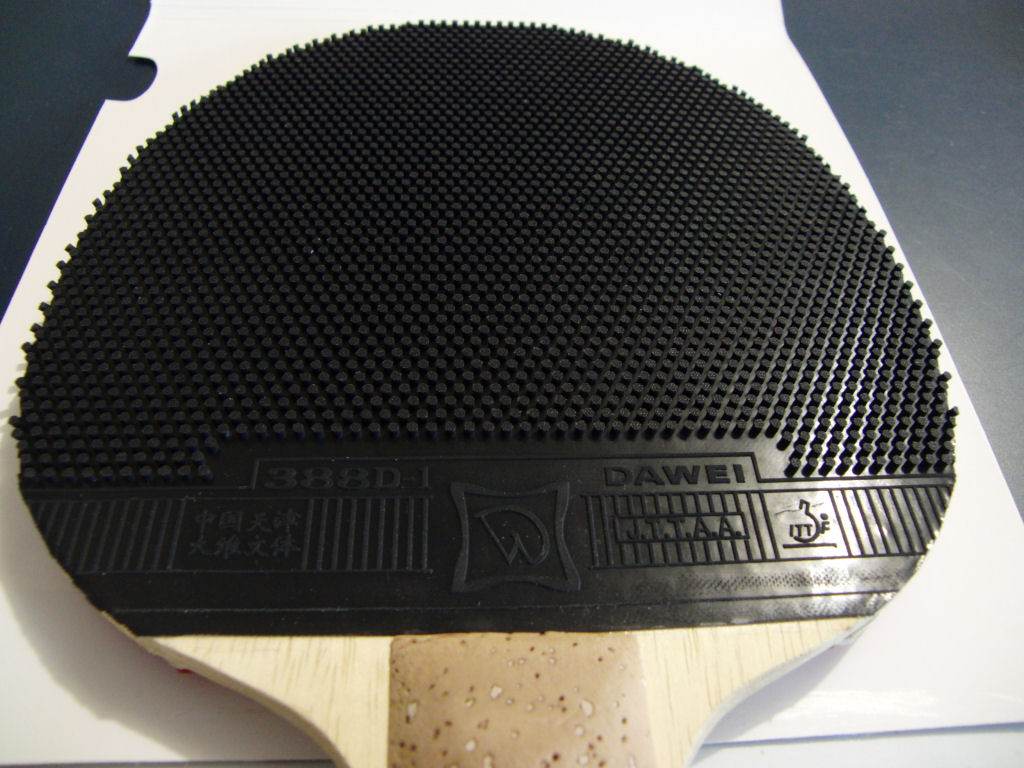
4.Anti-Spin Rubber
Smooth surface with very little friction, reducing spin.
Spin: Virtually no spin can be created, but it can neutralize incoming spin.Slow, allowing for more control.High control, especially for blocking and returning heavy spin shots.Defensive players looking to neutralize spin-heavy opponents.
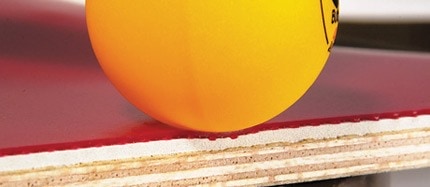
5.Medium Pips Rubber
Medium-length outward-facing pips.A balance between spin reversal and spin generation.Moderate speed, less than short pips but faster than long pips.Offers more control than short pips while still disrupting the opponent’s spin.All-round players who want a mix of offensive and defensive capabilities.
Chose Right Rubber
Defensive Paddles:These paddles are designed for players who prioritize defense and control over raw power.They often feature softer rubbers and thicker sponges, which absorb impact and provide a more stable platform for returning shots.
All-Round Paddles:As the name suggests, all-round paddles are designed to provide a balance of offense and defense.They are suitable for players who want a versatile racket that can adapt to different playing styles and situations.
Specialty Paddles:There are also specialty paddles designed for specific techniques or playing styles, such as those with customized rubber compounds or blade materials.
Use of Ping Pong Paddle
Hold the paddle with a relaxed yet secure grip. The most common grip styles are the shakehand grip and the penhold grip. Choose the one that feels most comfortable and natural to you.
Stand with your feet shoulder-width apart and slightly staggered, with one foot slightly forward. This helps maintain balance and allows for quick movements in any direction.
When hitting the ball, use a smooth, fluid motion. Engage your whole arm, not just your wrist, to generate power and control. Keep your eye on the ball and adjust your swing based on the incoming shot.
Good footwork is essential for getting into the right position to hit the ball. Move quickly and efficiently around the table, using small, shuffling steps to maintain your balance and stability.
Mix up your shots to keep your opponent off balance. Use different spins, speeds, and angles to create unpredictability and make it difficult for your opponent to anticipate your next move.
Maintenance of Ping Pong Paddle
After each use, wipe your paddle clean with a soft, damp cloth to remove any dirt, sweat, or residue. Avoid using harsh chemicals or abrasive materials, as these can damage the paddle’s surface.
Store your paddle in a cool, dry place away from direct sunlight and extreme temperatures. This will help prevent warping, cracking, or other damage to the paddle.
Use a paddle case or cover to protect your paddle when not in use. This will help prevent scratches, dings, and other damage that can occur from accidental drops or collisions.
Over time, the rubber on your paddle’s surface will wear down and lose its effectiveness. When this happens, it’s time to replace the rubber. Look for high-quality replacement rubber that matches your playing style and preferences.
Regularly inspect your paddle for any signs of damage or wear. If you notice any cracks, warping, or other issues, address them promptly to prevent further damage and maintain optimal performance.
How to Glue Rubber onto Table Tennis Blade
Gluing rubber onto a table tennis blade, also known as applying a new rubber sheet to a paddle, requires careful preparation and precise application.
Prepare the Surface:Clean the blade thoroughly with rubbing alcohol or a similar cleaner to remove any dirt, dust, or oils.Ensure the blade is completely dry before proceeding.
Prepare the Rubber Sheet:Remove the protective film from the adhesive side of the new rubber sheet, if there is one.Some rubber sheets come with pre-applied adhesive; if not, you may need to apply a special table tennis rubber glue.
Apply Glue (if necessary):If your rubber sheet doesn’t have pre-applied adhesive, apply a thin, even layer of table tennis rubber glue to the blade using a brush or sponge provided in the glue kit.Allow the glue to become tacky according to the manufacturer’s instructions. This usually involves waiting for a specific amount of time or until the glue changes consistency.
Position the Rubber Sheet:Carefully align the rubber sheet on the blade, ensuring it is centered and straight. You may want to use a ruler or straightedge to help with alignment.
Press and Smooth the Rubber:Once the rubber is positioned correctly, press it down firmly onto the blade, starting from one end and working towards the other.Use a roller or your hands to smooth out any bubbles or wrinkles, ensuring the rubber adheres evenly to the blade.
Trim the Edges:Using a sharp utility knife or scissors, trim the excess rubber around the edges of the blade, following the contour of the blade’s shape.
Allow to Set:Follow the manufacturer’s instructions for how long to let the glue set. This typically involves leaving the paddle undisturbed for a specific period of time.
Finish and Test:Once the glue has set, you can use a fine-grit sandpaper or a special edge tape trimmer to smooth out any rough edges.Test the paddle to ensure the rubber is securely attached and performs as expected.
Remember, applying rubber to a table tennis blade requires patience and precision. If you’re unsure about the process or lack the necessary tools, it might be best to have a professional do it for you to ensure the best results.
What Brand Of Ping Pong Paddle Is Good?
1. Butterfly
Butterfly paddles are highly respected in the world of table tennis, offering great control, spin, and speed. They are favored by professional players, but they also have models suitable for beginners.
Popular model: Butterfly Timo Boll series
2. Stiga
Stiga paddles are known for their durability and balance. They offer a wide range of paddles, from beginner to advanced levels, and are widely used in tournaments.
Popular model: Stiga Pro Carbon
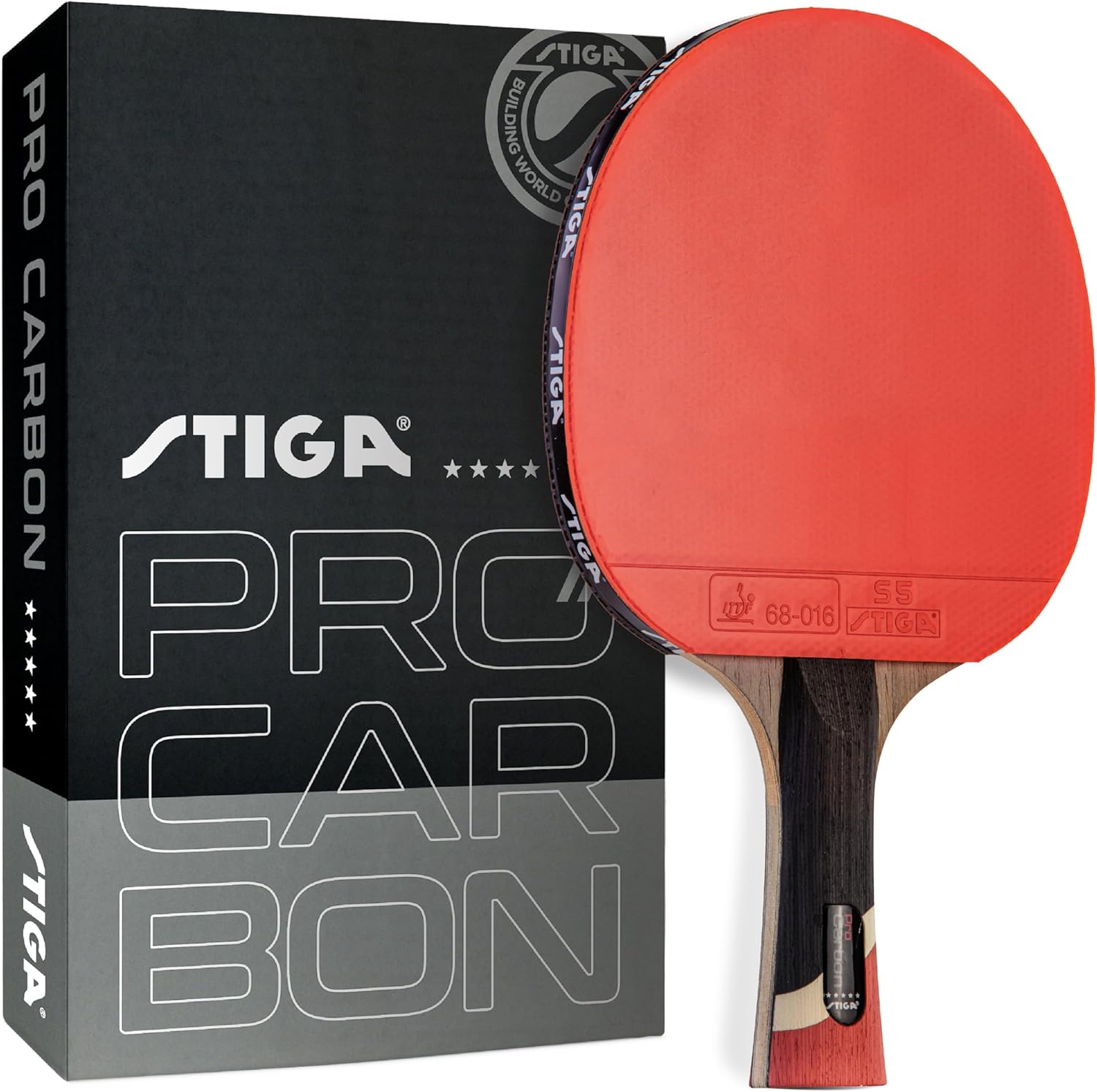
STIGA Pro Carbon Performance-Level Table Tennis Racket with Carbon Technology for Tournament Play
3. Killerspin
Killerspin is a premium brand known for its stylish and high-performance paddles. They are ideal for players who focus on spin and control.
Popular model: Killerspin Jet 800
4. DHS (Double Happiness Sports)
DHS is a Chinese brand popular among professional players. Their paddles are known for providing excellent spin and speed, making them ideal for aggressive players.
Popular model: DHS Racket 4002
5. JOOLA
JOOLA paddles offer great quality at affordable prices, making them a great choice for both casual and competitive players. They also sponsor major tournaments.
Popular model: JOOLA Infinity Overdrive


